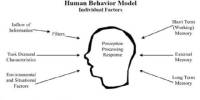An eating disorder is a mental disorder; it is when we have an unhealthy attitude to food, which can take over our lives and make us ill. It can involve eating too much or too little or becoming obsessed with our weight and body shape.
People with anorexia nervosa and bulimia nervosa tend to be perfectionists with low self-esteem and are extremely critical of themselves and their bodies. They usually “feel fat” and see themselves as overweight, sometimes even despite life-threatening semi-starvation (or malnutrition). Intense fear of gaining weight and of being fat may become all-pervasive. In the early stages of these disorders, patients often deny that they have a problem.
The causes of eating disorders are not clear, although both biological and environmental factors appear to play a role. Eating disorders affect about 12 percent of dancers. Cultural idealization of thinness is believed to contribute to some eating disorders. Individuals who have experienced sexual abuse are also more likely to develop eating disorders. Some disorders such as pica and rumination disorder occur more often in people with intellectual disabilities. Only one eating disorder can be diagnosed at a given time. Men and women of any age can get an eating disorder, but they most commonly affect young women aged 13 to 17 years old.
In many cases, eating disorders occur together with other psychiatric disorders like anxiety, panic, obsessive-compulsive disorder, and alcohol, and drug abuse problems. New evidence suggests that heredity may play a part in why certain people develop eating disorders, but these disorders also afflict many people who have no prior family history. Without treatment of both the emotional and physical symptoms of these disorders, malnutrition, heart problems, and other potentially fatal conditions can result. However, with proper medical care, those with eating disorders can resume suitable eating habits, and return to better emotional and psychological health.
Types of eating disorders –
The most common eating disorders are:
- Anorexia nervosa – when people try to keep their weight as low as possible by not eating enough food, exercising too much, or both
- Bulimia – when people sometimes lose control and eat a lot of food in a very short amount of time (binging) and are then deliberately sick, use laxatives (medicine to help people poor), restrict what they eat, or do too much exercise to try to stop themself gaining weight
- Binge eating disorder (BED) – when people regularly lose control of their eating, eat large portions of food all at once until they feel uncomfortably full, and are then often upset or guilty
- Other specified feeding or eating disorder (OSFED) – when any people’s symptoms do not exactly match those of anorexia, bulimia or binge eating disorder, but it does not mean it’s a less serious illness. OSFED is the most common, then binge eating disorder and bulimia. Anorexia is the least common.
Treatment can be effective for many eating disorders. Treatment varies by disorder and may involve counseling, dietary advice, reducing excessive exercise, and the reduction of efforts to eliminate food. Medications may be used to help with some of the associated symptoms. Hospitalization may be needed in more serious cases. About 70% of people with anorexia and 50% of people with bulimia recover within five years. Recovery from binge eating disorder is less clear and estimated at 20% to 60%. Both anorexia and bulimia increase the risk of death.
In the developed world, anorexia affects about 0.4% and bulimia affects about 1.3% of young women in a given year. Binge eating disorder affects about 1.6% of women and 0.8% of men in a given year. Among women about 4% have anorexia, 2% have bulimia, and 2% have binge eating disorder at some time in their life. Rates of eating disorders appear to be lower in less developed countries. Anorexia and bulimia occur nearly ten times more often in females than males. Eating disorders typically begin in late childhood or early adulthood. Rates of other eating disorders are not clear.
Information Sources:
















